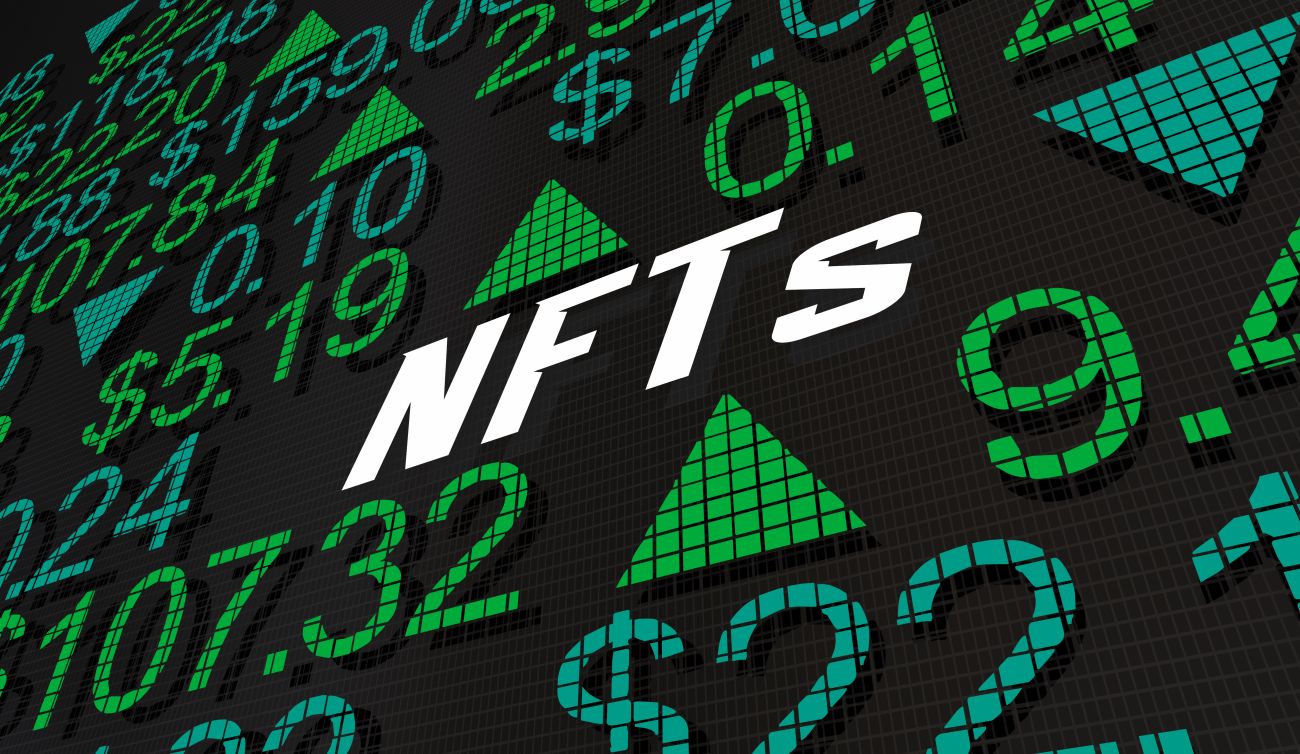Since November 2017, a total of $174 million have been spent on NFTs. And, if you’ve been paying attention to the tech segment of your local news broadcast over the last few months, you know that $174 million is just the beginning. NFTs have already revolutionized the buying and selling of games and collectibles. They’ve redefined the way that artists sell their creations and provided collectors with secure and verifiable collectibles. Yet, this exciting new technology is still in its infancy.
So, what are NFTs, how do you buy and sell them, how much are they worth, and are they ethical? Let’s get you caught up so you can start cashing in on this exciting new digital frontier.
 iQoncept / Shutterstock
iQoncept / ShutterstockWhat Is an NFT?
First, the acronym. “NFT” stands for “non-fungible token”.
NFTs are transferrable, secure, and valuable. It works sort of like the popular cryptocurrencies Bitcoin and Ethereum. However, NFTs differ from these cryptocurrencies because each is entirely unique and impossible to duplicate.
NFTs are digital files, like standard computer images or video clips, that an individual can actually own. Thanks to the security of the blockchain, NFTs that you purchase can only ever belong to you, unless you decide to sell them. Each NFT contains a smart contract that proves your ownership. Moreover, ownership can be traced from the current owner all the way back to the creator in a matter of seconds.
Essentially, the invention of NFTs has put digital art on par with physical art pieces. In turn, creating an entirely new marketplace for collectible digital assets. It really is groundbreaking stuff, if only a little difficult to wrap your head around.
How to Buy/Sell NFTs
There are a lot of places to buy, sell, and trade NFTs already. Nifty Gateway, MakersPlace, SuperRare, Open Sea, Decentraland, and Rarible are all independent and secure marketplaces that you can use to purchase collectible NFTs or sell your own.
Buying NFTs works like any other digital marketplace. Sign up, choose an NFT, and add it to your cart. The difference is that these digital assets can sell out in a way that was never possible before this new technology.
Content creators can sell their goods, too. Doing that is as simple as uploading the art piece, setting the parameters, and paying a small transaction fee that covers the cost of transforming your digital image into an NFT. It really is that simple, which is why content creators are so excited about the future of this industry.
How Much Are NFTs Worth?
Just like the market for art, the value of each individual NFT is relative to demand. However, there is most definitely money that can be made. Moreover, there really doesn’t seem to be any boundaries to what can be sold and what the community of collectors is willing to spend their money on.
Some of the biggest examples include:
- Twitter co-founder and CEO Jack Dorsey selling his very first tweet for $2.9 million;
- Super Bowl champion Rob Gronkowski making over $1.8 million selling collectible trading card NFTs, and;
- Mike Winkelmann, a digital artist who goes by the alias Beeple, selling his collage “Everydays: The First 500 Days” for an astounding $69 million, making him one of the richest living artists around.
It remains to be seen whether the NFT market cools down or heats up. At the moment, it’s evident that NFTs are lucrative.
Are NFTs Ethical?
NFTs create two philosophical conundrums. One old one and one relatively new one.
First, to the old one: counterfeiters. Art and fraudsters go hand-in-hand. As suspected, they’ve already infiltrated the NFT marketplace in droves. Fake profiles minting and selling art that doesn’t belong to them has already happened. Unfortunately, it’s expected to continue happening until the right checks and balances are put in place.
The second is the buying, selling, and trading of NFTs is a massive resource drain. It puts so much stress on the environment that it’s been dubbed an “ecological nightmare pyramid scheme” by some in the art community. This is because the process of “minting” new art, or creating new NFTs, can take quite a bit of computing power.
There are plans for a switch to an emission-less mode of minting new NFTs, but that remains a pipedream as of this writing.
Conclusion
A new frontier for artists, art sellers, and art buyers is creating a buzz, not unlike the dot-com bubble. There’s money to be spent on exciting new technologies and as you already know, it’s being spent.
There are a lot of people excited about NFTs and their potential for overhauling the digital ownership model. It’s easy to understand why. NFTs and the industry shift that they may represent means potentially more money in the hands of artists and creators. But, as with all new technology, NFTs are looking more and more like another monkey’s paw.
Will the potential ecological impact of this fast-rising digital medium be enough to cool the raging NFT fire? Is this just a fad, destined to level off in a year or two? It’s impossible to say, but nevertheless, exciting to watch.